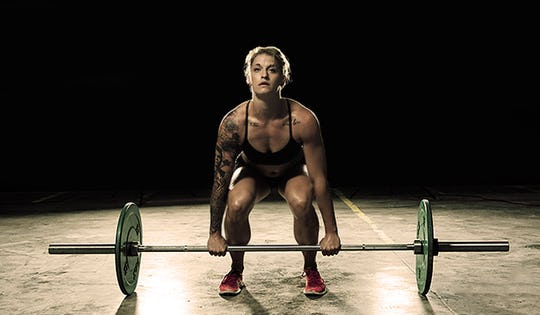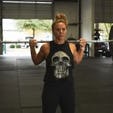Many people consider the squat the “King” of all exercises. While those people make a strong case, the deadlift’s claim to the throne is as strong if not stronger. Few exercises combine the full body strength required for the deadlift, working the back, legs, traps, shoulders, arms, forearms, abs and butt!
Unfortunately, the lift is often attempted without using proper deadlift form, resulting in injury. There are five key points to remember when safely performing the proper deadlift: Your feet, your grip, your stance, the pull, and the negative.
Deadlift Key #1 – The Feet
Place your feet shoulder width apart. Make sure your feet are flat and driving down through the heel. If you drop your hips to pull and feel your ankles roll, something is wrong.
For most people, simply changing your foot placement will correct the issue. Others may need to improve their ankle mobility or even try new shoes.
Deadlift Key #2 – The Grip
The deadlift can be performed with a double overhand grip, mixed grip or hook grip among others. For the sake of this article, we are going to focus on the conventional double overhand grip.
Grab the bar with both palms facing toward your body and your arms vertical to the floor – if your hamstrings feel tight, do bodyweight squats to open up your hips. Place your hands about shoulder width apart, right outside your legs to minimize the angle of your hips and decrease the distance of the pull.
Deadlift Key #3 – The Stance
Bend your knees until your shins are a few inches off the bar, keeping them above the middle of your feet. You’ll need room to move both your shins and knees forward. This allows your hips to drop into place and help prevent your back from rounding.
Lower your butt until your quads are parallel. Lift your chest, but don’t squeeze your shoulder-blades together. Pull your shoulders back at a downward angle, positioning them over the bar, remembering to keep your head inline with rest of your spine.
Deadlift Key #4 – The Pull
Keep the bar as close to your body as possible, rolling it over your knees and thighs until your hips and knees are locked. Stand straight, do not lean back at the top. By driving your feet down into the floor, the weight will begin its upward trajectory.
Don’t rise too fast into a straight legged position, it is a fluid motion. As the bar hits the knees, use your glutes to lock into a straight torso position. Don’t arch your back, keep your core braced throughout the lift. As the bar passes your knees, don’t pull with your back, but thrust with your hips.
Keep your head up and chest out – this will help maintain proper alignment of the back. As you pull the weight up, you want your legs to straighten out simultaneously with your hips. Your hips, knees and feet should simultaneously form a straight line.
Deadlift Key #5 – The Negative
Now it’s time to return the bar to the floor. Don’t lower the weight straight down. Instead, load both the hamstrings and glutes with a Romanian Deadlift movement back to the knees.
Once it reaches the knees, move the bar straight back to the floor where you can perform another rep immediately or come to a complete stop, resetting before your next rep.
Putting these five keys to use will ensure proper deadlift form without the risk of injury and build an all-around powerful, muscular, shredded physique while strengthening all the major muscle groups.

)





